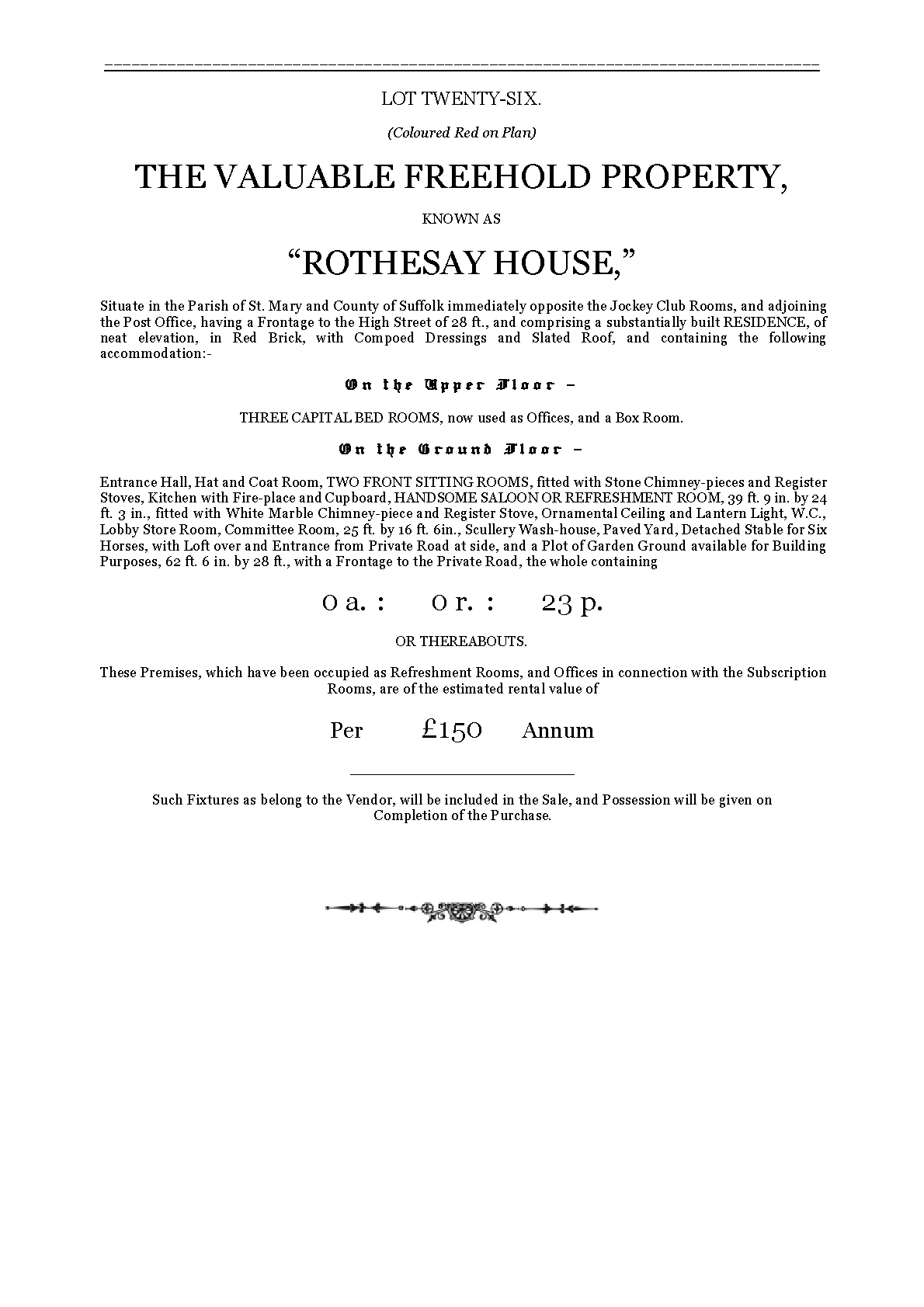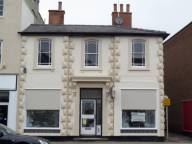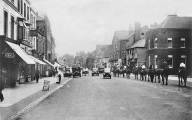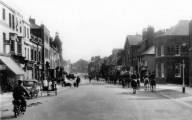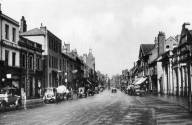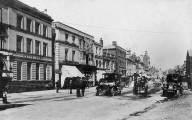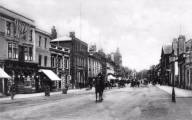No.124 High Street
Rothsay House - Keylocks Estate Agents
Building History
|
16th April 2015 - |
Keylocks Estate Agents |
|
- 2015 |
Abbotts Estate Agents |
|
1986 |
D.L. January, estate agents, agents for Saffron Walden &
Essex Building Society |
|
1975 |
Douglas L. January & Partners |
|
12th June 1953 |
Smith's Cleaners / Rothsay House - Newmarket UDC re-numbering map |
|
1936 |
Rothsay House: Smith Jas. & Sons cleaners |
|
1926 |
Griffiths, O.E., Rothsay Rooms - Newmarket Street Directory |
|
1925 |
Griffiths, Osmond E., F.A.I. auctioneer, valuer, house & estate agent, Rothsay House |
|
1916 |
Griffiths, Osmond E., auctioneer, valuer, house, estate & insurance agent, Rothsay House auction mart - Nkt.55 - Kelly's Directory |
|
1911 |
Griffiths, auction rooms / Smith & Co. - Census |
|
1904 |
Griffiths, Osmond E., auctioneer, valuer, house, estate & insurance agent, Rothsay House auction mart - Kelly's Directory |
|
1901 |
Griffiths & Chennell, in occupation - Census |
|
1901 |
Griffiths & Chennell, auctioneers - Eastern Counties Directory |
|
1896 |
Griffiths & Chennell, auctioneers, valuers, house, estate & insurance agents, |
|
1892 |
Griffiths & Chennell, auctioneers, valuers, house, estate & insurance agents, High Street |
|
1891 |
Rothesay House: John Manning, painter - Census (see Town Hall - No.29 High Street in 1901 Census) |
|
5th July 1884 |
Rothesay House offered for sale as part of William Parr Isaacson's estate |
|
1881 |
John Manning, painter - Census |
Notes
- You'll probably have noticed that even on this page that the name of
this house is spelt more than one way. Most of the offical documents
produced by the local councils refer to it as
Rothsay House, but if you look at the 1884 sales document below it's
spelt Rothesay House. It's also Rothesay House on the 1891 census
for John Manning (see below).

By 1896, Kelly's Directory is showing the auctioneers Griffiths & Chennell as being at Rothsay House and the name seems to have stayed changed after then. So it would appear that it was Griffiths & Chennell who dropped the letter e from the name for some reason.
Rothesay is the principal town on the Isle of Bute, in the council area of Argyll and Bute in Scotland, so it would seem that this is the correct way to spell the name, but then a short crawl on the internet and you'll soon find plenty of other places that use the name Rothsay.
For the sake of consistency, this web site will use the name Rothsay House (for no other reason than that's what most local documents refer to it as).
The origins of how this house got its name are given at the bottom of this page.
BREAKING NEWS:- Newmarket has another estate agent on the High Street!
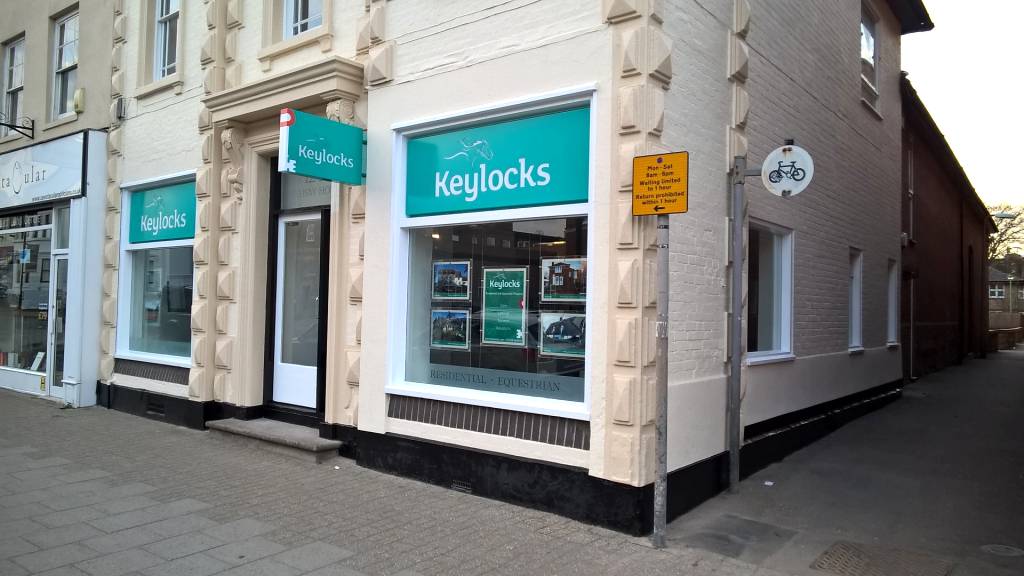
Keylocks Estate Agents - April 2015
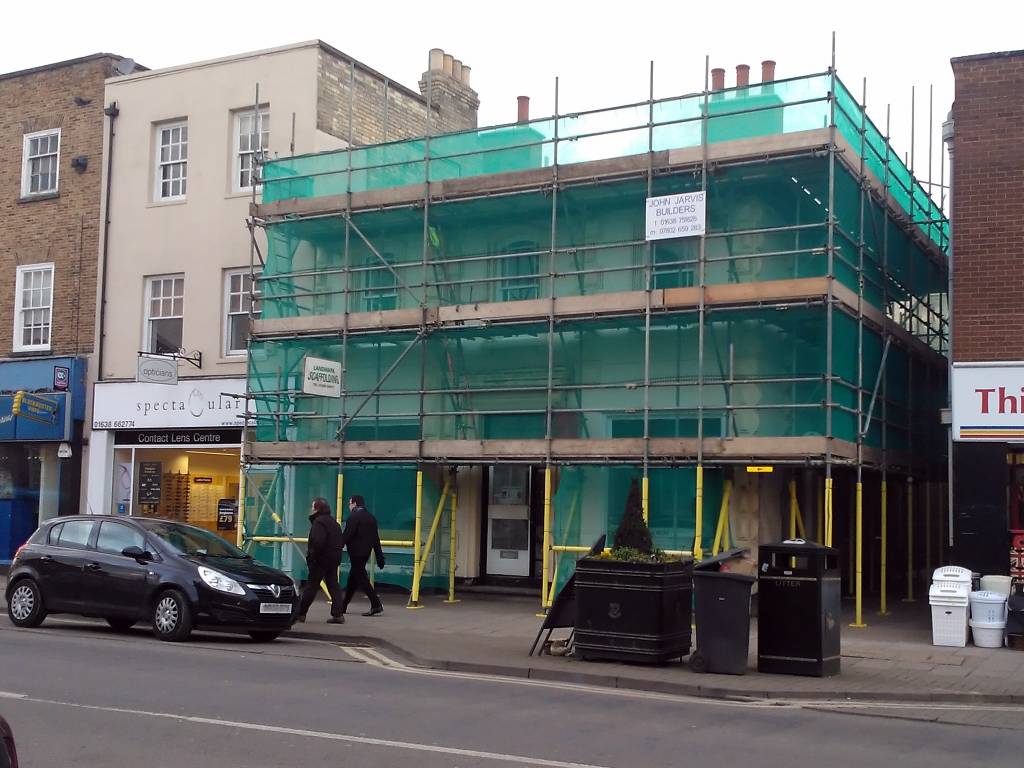
Rothsay House - February 2015 - undergoing renovations
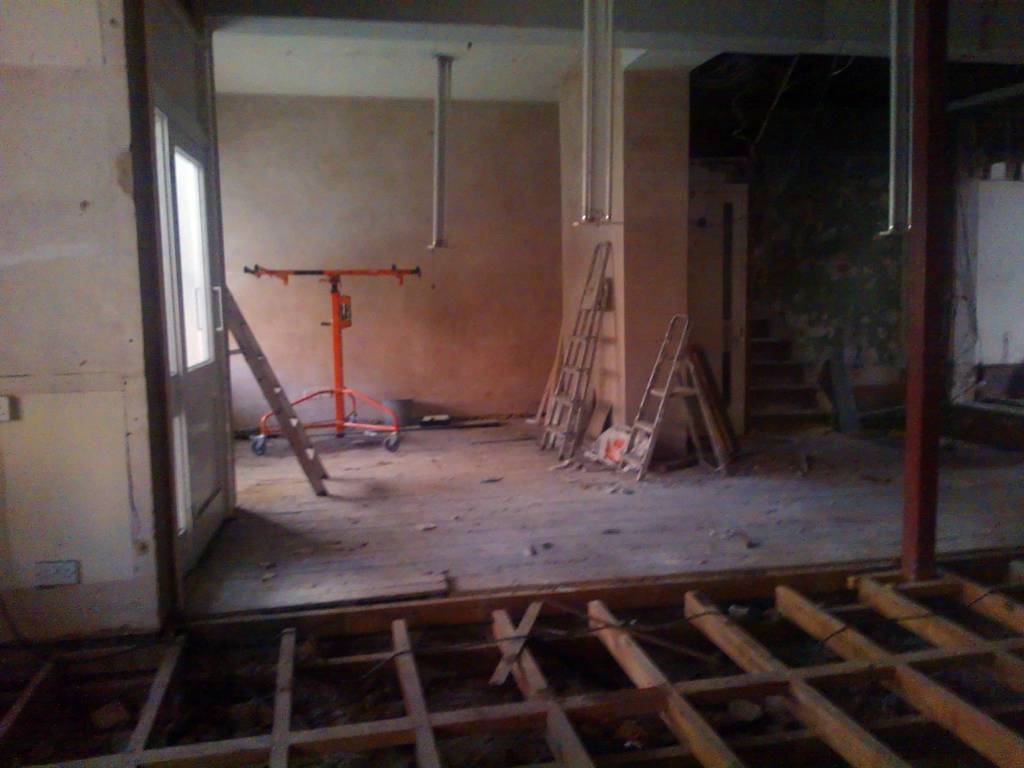
Rothsay House - February 2015 - undergoing renovations
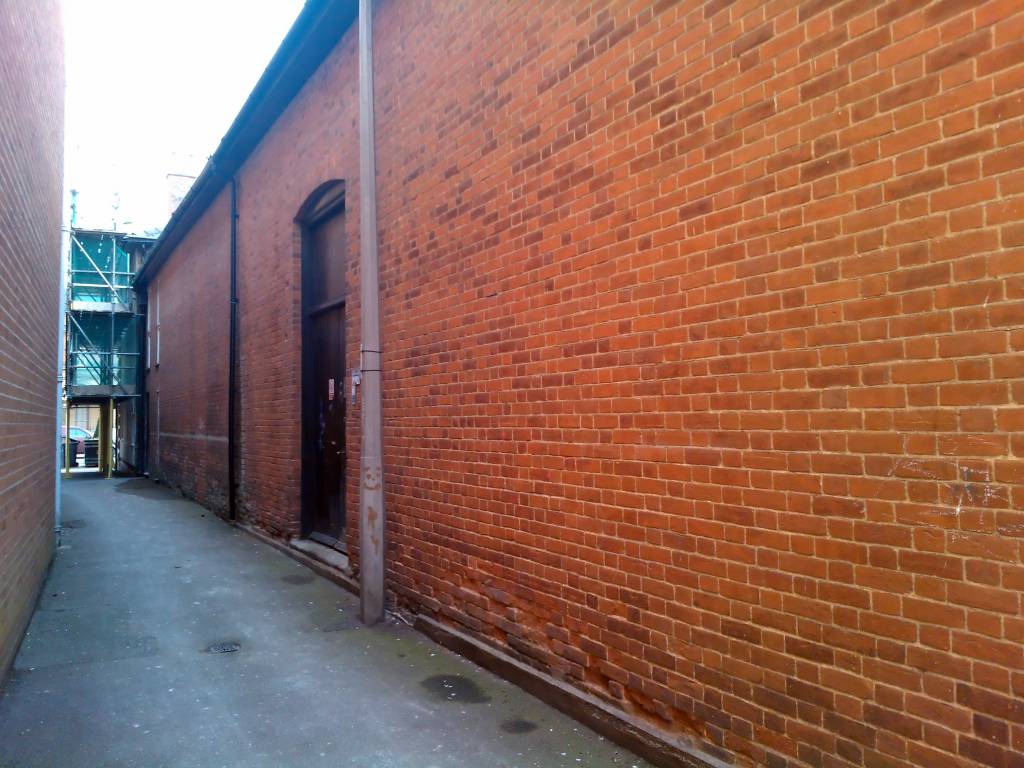
Rothsay House - auction rooms at the rear in the New-Cut
Douglas L January
- In 1937 Douglas January left his position as a Partner at Drivers, a well known Cambridge firm to establish his own company - Januarys. He was joined by his wife Winnie, and later his younger brother Desmond, and set up offices in 7 Downing Street, Cambridge.
| Journal, April 16, 1987 JANUARY’S two-day sale last week was their best ever in the five years that the Newmarket auctioneers have been staging sales at the Rothsay Rooms off Newmarket High Street. Top price was £8,100 paid for a 1955 oil painting of magnolias by Cecil Kennedy. This was a much higher price than auctioneer David Palmer had been expecting. The artist’s work has been fetching in excess of £5,000 in the London salerooms. |
-
Griffiths & Chennell
-
The partnership of Griffiths & Chennell consisted of Osmond Edward Griffiths
(further details about him are given below) and Fredrick Payne
Chennell, the son of Benjamin Chennell; the owner of the White
Hart Hotel, just a few doors along from here at No.134
high Street.
- On 23rd April 1892 Messrs Griffiths and Chennell were at Derby House in Newmarket
(No.27 Exeter Road). The 1892 Kelly's Directory gives their address as just 'High Street'
and it's not until 1895 that the name Rothsay House is recorded as being
associated with them.
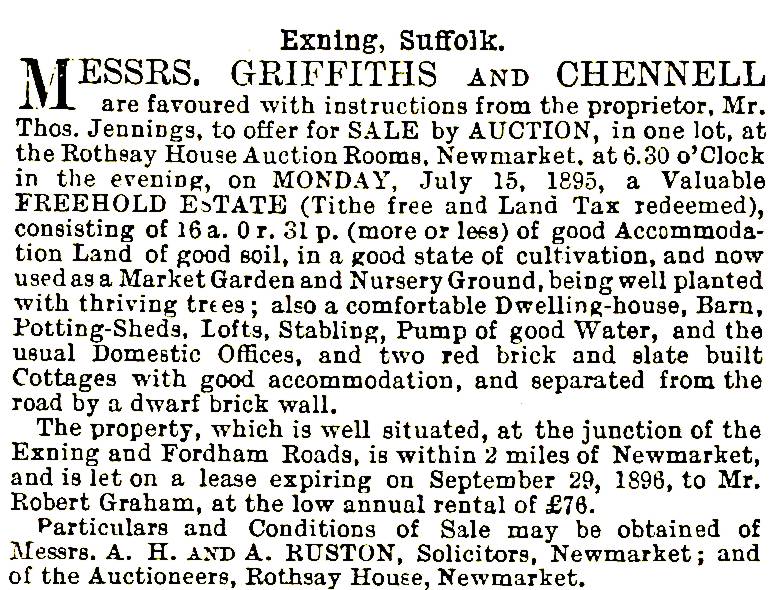
1897
Messrs Griffiths and Chennell, Newmarket are favoured with instructions to offer for sale by auction all that valuable freehold estate known as Newmarket Mills, at which a lucrative business has been carried on for many years.
The powerful tower windmill, advantageously situated on a commanding site with the goodwill of the business as a going concern.
Report courtesy of Mike petty - www.cambridgeshirehistory.com/MikePetty
1899
Griffiths and Chennell offered for sale Regal Lodge at Kentford. It comprises a handsomely appointed residence which Mrs Langtry has used as a country residence.
It is fitted throughout with all modern conveniences and luxury and has three reception, one billiard, nine bed and dressing and two bath-rooms.
The gardens are delightfully set out and there is stabling for 18 horses. It was sold for £6,700.
Mrs Langtry arrived just as the sale was concluding.
Report courtesy of Mike petty - www.cambridgeshirehistory.com/MikePetty
Bury and Norwich Post Suffolk, England
NEWMARKET
12 Jun 1900
Griffiths and Chennell offered for sale by auction, on Tuesday evening, under instructions from the executors of the late Mrs. Elizabeth Bailey, Mr. H. J. Linzell, and others, several properties in Newmarket, and a number of shares in the Newmarket Waterworks
-
The partnership was dissolved on 5th October 1901.
The London Gazette, January 3, 1902
Notice of Dissolution of Partnership.
NOTICE is hereby given, that the Partnership heretofore subsisting between us the undersigned, Osmond Edward Griffiths, of Newmarket, in the county of Suffolk,
and Frederick Payne Chennell, of the same place, carrying on business as Auctioneers, Estate Agents, Valuers, and Insurance Agents, under the style or firm of "Griffiths and Chennell"
was on the fifth day of October, one thousand nine hundred and one, dissolved by mutual consent.
All debts due to and owing by the late firm will be received and paid by the undersigned Osmond Edward Griffiths, by -whom the business will in future be carried on.-Dated this nineteenth day of December, one thousand nine hundred and one.
OSMOND E. GRIFFITHS.
F. P. CHENNELL.
-
Major Osmond Edward Griffiths
- Osmond Edward Griffiths was born on September 5 1866, in Bury St
Edmunds. He married his wife Norah née Sandys in 1895.
- On 1st April 1908 he transferred from the 2nd Volunteer Battalion,
The Suffolk Regiment, to the 5th Battalion, Suffolk Regiment as Captain Osmond Edward Griffiths.
6 years later after the outbreak of WWI, on 8th August 1914, he was
appointed as a temporary Major and became
Major Osmond Edward Griffiths.
- In later years Major Griffiths lived at Park Gate in Park lane, Newmarket.
He died on 2nd January 1940 at the Evelyn Nursing Home, Trumpington Road, Cambridge.
_1940_Probate.jpg)
-
John Manning
- Baptised in the parish church at Depden (just off the A134
between Chedburgh and Wickhambrook) on 11th October 1835, John
apprenticed as a plumber and glazier, but by 1861 he'd moved to
Newmarket and was listed as a painter.
He's shown here at Rothsay House from 1881 until 1891, presumably living in the upstairs accommodation as detailed in the sales brochure listed below. After his time here he moved to the Town Hall - No.29 High Street where's he's listed in the 1901 Census.
He continued in his trade until he died on 9 April 1909 at No. 1 Park Avenue, listed as a journeyman painter.
-
William Parr Isaacson 1884
- William Parr Isaacson lived on the other side of the High Street at Willoughby House - No.103 High
Street (now the Post Office). Over many years he'd acquired most
of the former Thomas Panton's and subsequently William Crockford's
estate, which by 1884 included Rothesay House.
In 1884 William put the whole of his estate up for sale and this was Lot 26.
-
Thomas Panton & William Crockford
- Rothsay House was built by Thomas Panton (snr.) in the mid 18th
century. Ownership of the house continued with his son, another
Thomas Panton (jnr.).
Upon this Thomas' death the estate was purchased by William Crockford in 1808 - this included Willoughby House - No.103 High Street , Panton House - No.105-No.113 High Street and Rothsay House.
Crockford also bought a farm, still known as Crockford's Farm along the Dullingham Road where at considerable expense he constructed a pig-rearing unit. The farming community at the time mocked this foray into farming as Crockford's ignorance of anything other than fish or horses was common knowledge. He owned several racehorses, but the pig farm was never a success.
Newmarket: its sports and personalities by Frank Silzter. Published 1923
'A stroll through the Auction Hall of Mr. Griffith shows that the room has changed but little since the days of Crockford; and individuals but recently deceased, could remember going into it and picking up sovereigns from the floor after a big hazard night.'
In 1828 William Crockford, with the sponsorship of the Duke of Wellington, opened Crockford's gambling den at No.50 St James's Street in London. The club closed after 'Old Crocky' (as Crockford was known) died on 24th May 1844.
Over the years of running the gambling dens ‘Old Crocky’ won hundreds of thousands of pounds from his many punters, but unfortunately he came to a rather sad end, investing money and all his hopes on a horse he entered in the 1844 Derby. This race has become known as the 'Dirty Derby' (for further details of this see the page for the Golden Lion - No.44 High Street). In this race one syndicate substituted the favourite for another horse, another doped the second favourite, at least one of the principal jockeys was bribed, and a third well-backed horse was actually twice as old, and hence twice as strong as the remainder of the field. Crockford’s horse came nowhere, and he died two days later of a broken heart.
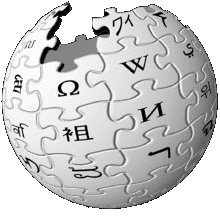 http://en.wikipedia.org/wiki/Crockford%27s
http://en.wikipedia.org/wiki/Crockford%27s
-
Further details about William Crockford can be found on the
Newmarket Local History Society web site:-
 http://www.newmarketlhs.org.uk/personalities2.htm
http://www.newmarketlhs.org.uk/personalities2.htm
-
Duke of Rothesay
- Many thanks to Joan Shaw, noted Newmarket Historian, for her
research shown below into the significance of the title of the Duke
of Rothesay and its close royal associations with Newmarket.
The first Duke of Rothesay was King James I of Scotland, he was a son of the first House of Stuart and his parents were King Robert III and Annabella Drummond. James was born in 1394 at Dunfermline Palace, Fife. He was created Duke of Rothesay and Earl of Carrick 10th December 1404. He succeeded his father on 4th April 1406. He started to rule in 1424 and was crowned on 21st May in Scone Abbey, Perthshire.
When King James VI of Scotland also became King James I of England he brought the title of the Duke of Rothesay to England. He was also the Duke of Albany, Earl of Ross and Baron of Ardmannock (1561). He succeeded as the King of Scotland in July 1567 and was crowned in the church of the Holy Rude, Stirling.
The title has remained through Prince of Wales, then Kings Charles I, II, James II and even King Edward VII. Today Prince Charles is the Duke of Rothesay, along with his many other titles.
- In 1714 King George II became the Duke of Rothesay. Thomas Panton
(snr.) was chief groom (equerry) to George II and master of the
king's running horses. His house in Newmarket was at No.105-113 High
Street - Panton House, but his estate in the town contained many more properties
including here at Rothsay House. Clearly it looks like this
association is the most
probable reason why the house was so named, in honour of King George
II.
The full list of properties, including 'Rothesay House - Lot Twenty-Six', that were part of Panton's, then Crockford's and finally William Parr Isaacson's estate are listed on the page for No.103 High Street.
John Chapman's 1768 map of Newmarket below shows a building at No.124 High Street of a similar size and shape to that still present today (if you include the rear car park). Although the exact build date of the present building is not known, Joan Shaw (who has researched these properties in great detail) is of the opinion that the stucco frontage of the building was produced at the same time that the similar frontage of Panton House was remodelled by William Crockford, which is most probably sometime around 1826 when his 'palace of gambling' was constructed in London. The comparison of the frontages of these two properties is shown in the photos below.
![]() http://en.wikipedia.org/wiki/Duke_of_Rothesay
http://en.wikipedia.org/wiki/Duke_of_Rothesay
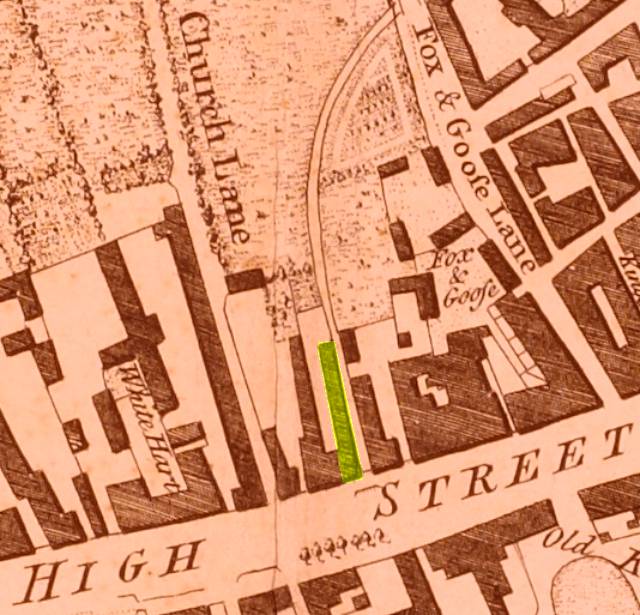
Chapman's 1768 map of Newmarket with Rothsay House highlighted |
|
|
Rothsay House Frontage |
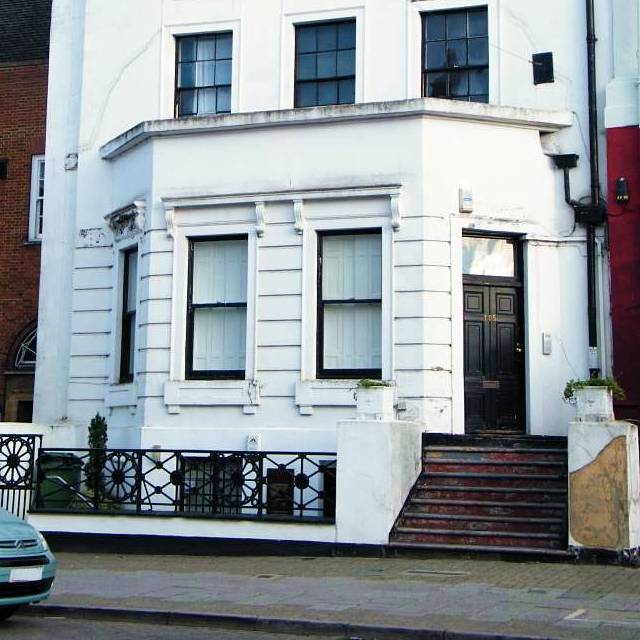
Panton House Frontage |
-
Building Changes
- Suffolk Record Office, Bury St Edmunds Branch
Newmarket Urban District Council Records
Reference EF 506 - Alterations to Rothsay House Auction Rooms, High St, for Messrs Hammond (W.C. and A.S. Manning) EF 506/6/1/1/44 Mar 1897
- Alterations to Rothsay House auction rooms, New Cutt, off High St, for C.E. Hammond EF 506/6/1/4/180 nd
- Planning Application - F/80/488
Application Received Sat 07 Jun 1980
Application Validated Sat 07 Jun 1980
Address Rothsay House 124 High Street Newmarket Suffolk
Proposal Alteration to front elevation (facing High Street)
Decision Application Approved
- Planning Application - F/90/571
Application Received Wed 12 Jun 1991
Application Validated Wed 12 Jun 1991
Address Rothsay House 124 High Street Newmarket Suffolk
Proposal Demolition of rear outbuildings and construction of two storey office block as amended by drawings received 9.11.90 and 27.12.90 and completed by certificate received 9.11.90
Decision Recommend Refusal
- Return to top of page
